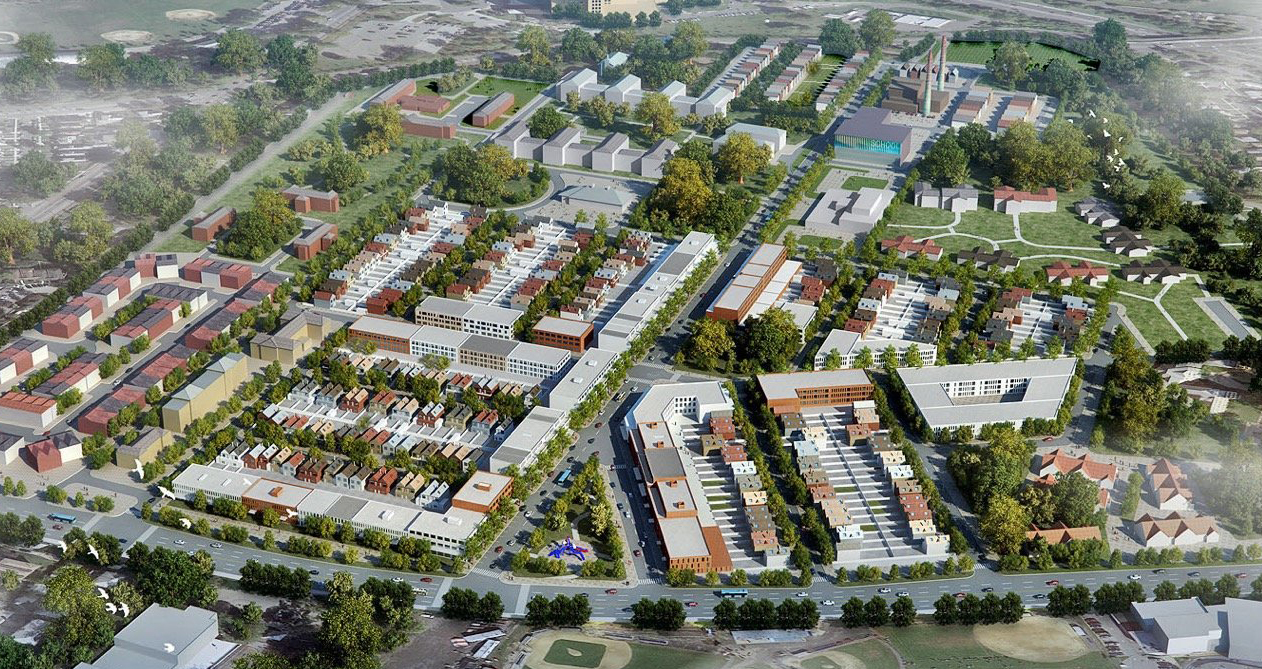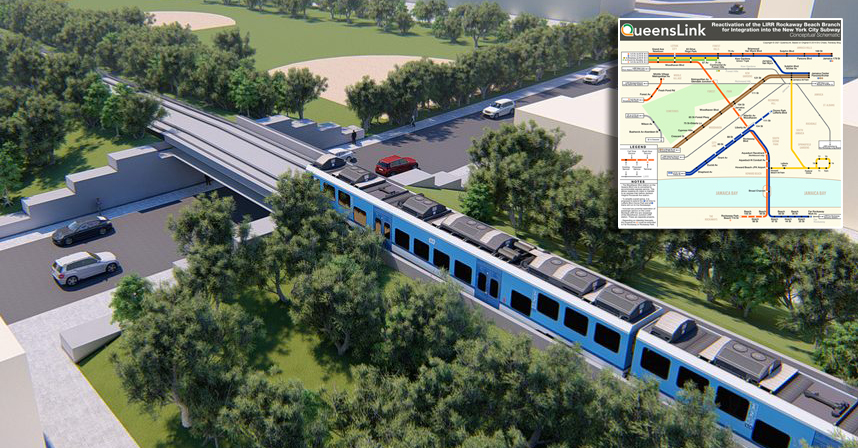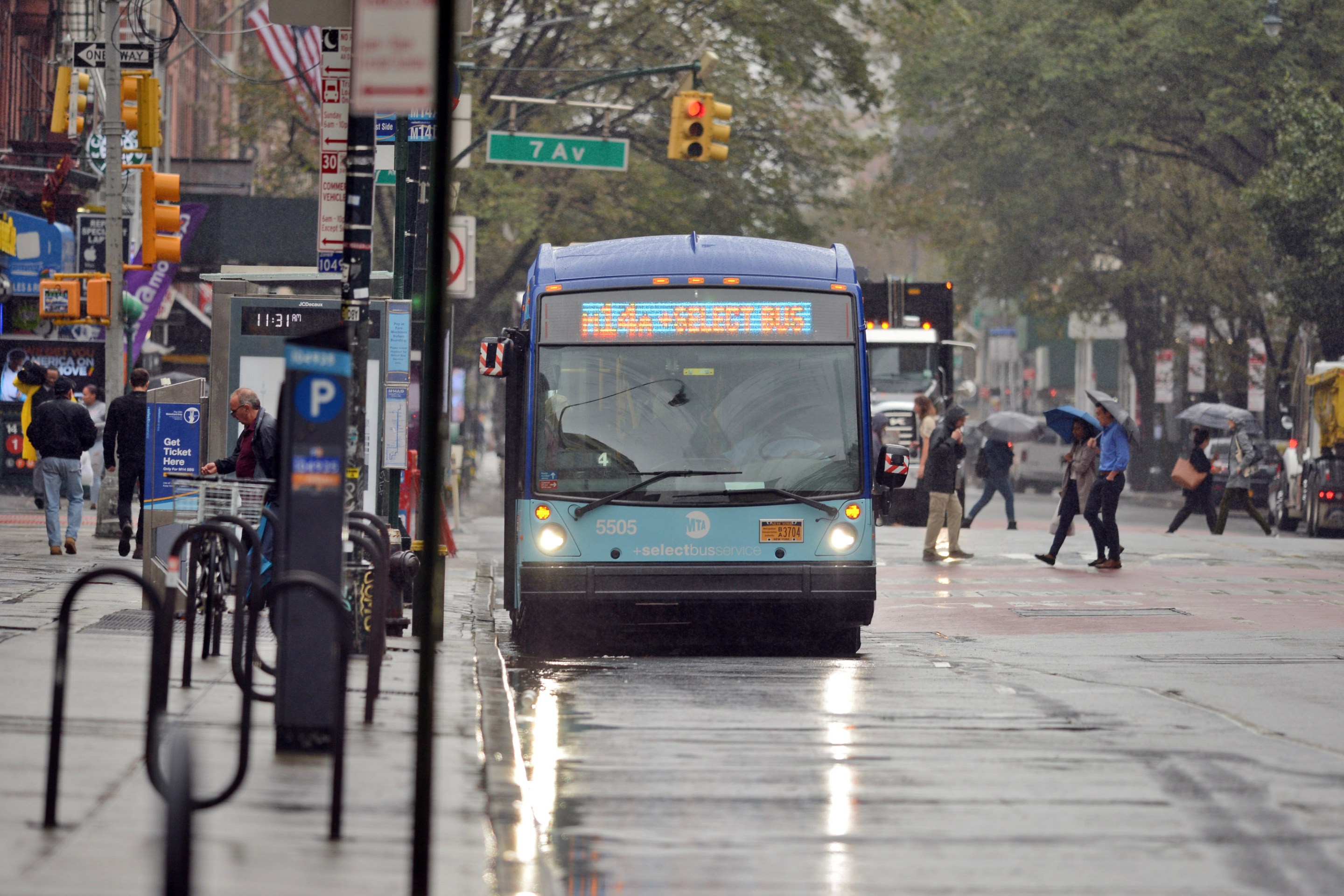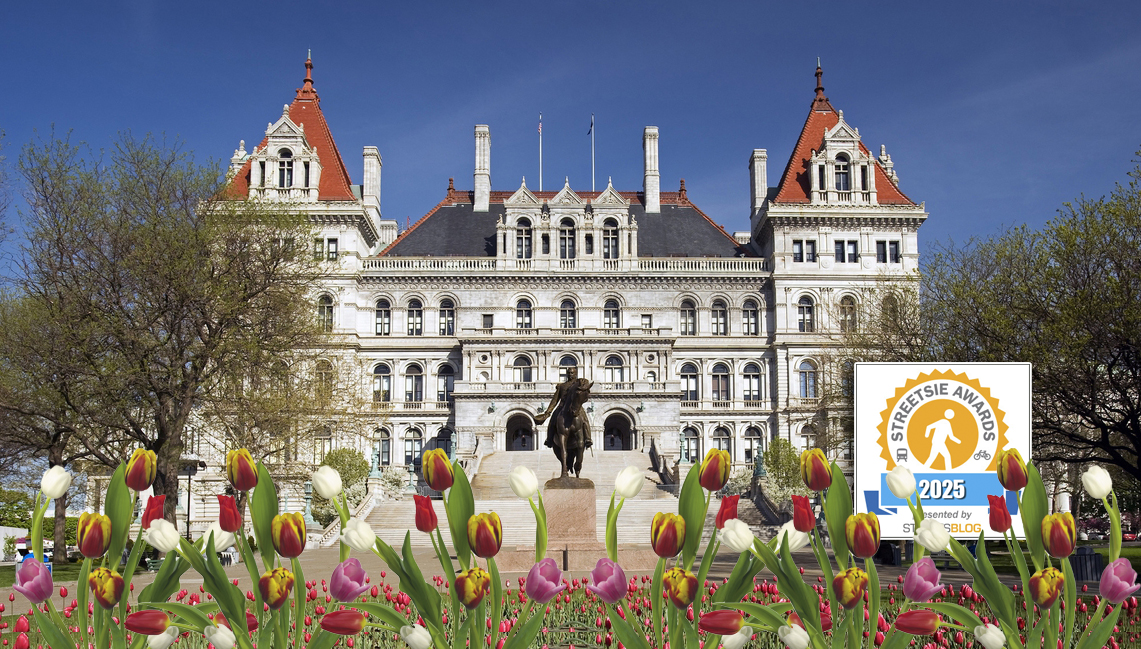The just-announced deal between the Hochul administration and some anti-housing Eastern Queens pols to scale back the number of homes to be built in the Creedmoor Psychiatric Center redevelopment is an epic failure for a site that could — and must! — include space for more neighbors.
Our rationale: We have a major housing crisis and urgently need safe, business-friendly, walkable, high-quality-of-life neighborhoods that aren't making the same mistakes of the 1950s. New York is a city of diversity, but it ignores the needs of that diverse population if it continues to build all of its new housing just like its old housing: for just one type of person.
But for us, it's more than about building lots of housing. With 59 of the site's 125 acres slated for redevelopment, Creedmoor offers one of the city’s last blank canvases large enough to upgrade our ideas about what housing in New York could look like — if only the political will existed to seize it.
It could be an entire neighborhood that does not require you to own a car.
The current plan
Details of the Tuesday night deal remain unclear, but according to Queens Eagle reporter Ryan Schwach, who broke the news that was later confirmed by Assembly Member Ed Braunstein, a project that was supposed to result in 2,775 housing units — 1,249 units as “affordable” — plus retail space, an early childhood center, an older-adult facility and potentially a K–8 school will now be scaled back to "significantly reduce the density" by 27 percent (!).
IBX: Some Eastern Queens officials have struck a deal to greatly lower and restructure the density planned for the redevelopment at Creedmoor. pic.twitter.com/AiK0pkKFKE
— Ryan Schwach (@RyanSchwach) August 5, 2025
It's the revenge of "neighborhood character." After all, Empire State Development had framed the plan — rightly — as a response to “the need for housing for a variety of different populations, including seniors, veterans.” But a few of Creedmoor’s neighbors and local politicians simply can't imagine anything beyond what they already know.
“We’re not very happy with what we saw at all,” said Bob Friedrich, a board member of Glen Oaks Village (a co-op) since 1991. “High density ... is not what we signed up for.” Such revanchists assert that multi-family construction jeopardizes their quality of life. And it's true that those voices often dominate local community board meetings — but we assure you, they don't reflect the broader Queens sentiment and they certainly don't take into account the city's need for a massive amount of housing that also reduces car travel. So much of their argument complains about "an increase in traffic" — so let's design a neighborhood that has a lot of great neighbors without the cars.
Across the borough, housing advocates wonder why the mayor and governor tolerate such regression. The City of Yes initiative — a centerpiece of Mayor Adams’s housing agenda (though Creedmoor is a state project) — aims to “build a little more housing in every neighborhood,” lifting parking mandates and encouraging accessory dwelling units to decrease the rapidly rising housing costs. Yet 12 of Queens's 14 community boards voted against the proposal.
Better managing this site would enable us to reach the City of Yes milestones, without implementing any of the "controversial" projects in the rest of the neighborhood.
Council Member Joann Ariola (R-Woodhaven) was one of the opponents. She boasts that her district does not want more housing, even as rents climb and families double- or triple-up. What she is really saying is that the battle over density is simply about empowering some neighborhoods to maintain a status quo that is only working (and barely at that) for those lucky enough to be on top.
An agreement has been reached with @EmpireStateDev that will significantly reduce the density of the Creedmoor Mixed-Use Redevelopment Project in response to concerns raised by the local community, me, @TobyStavisky, and @CMLindaLee. (1/2) pic.twitter.com/XfVgX5TzB1
— Ed Braunstein (@edbraunstein) August 6, 2025
What's needed
Instead of engaging in petty fights over how many units the project should comprise, Empire State Development should have rolled out a complete reimagining of what a from-the-ground-up development should be in 2025 New York City.
First and foremost, it needs to disrupt the cycle of car dependence that, ironically, pulls apart neighborhoods. By developing a community that supports non-drivers, ESD could have provided all the amenities needed on-site, which would reduce car use, a key by-product of the City of Yes. Meanwhile, the neighborhoods surrounding Creedmoor would be completely unaffected. That's truly a scenario where everyone wins: the current single-family housing is untouched, while this underutilized land could be put to use for those who don’t wish to own a car and want to live in a cheaper neighborhood where everything they need is within walking distance.
The even better news? There's a proven way to do this.
Consider Culdesac Tempe. It's that famous car-free neighborhood about 10 miles east of downtown Phoenix and surrounded by single-family homes and car-oriented strip malls. Since opening in 2023, it has proven that a dense, car-free enclave can thrive — and even boost the surrounding neighborhoods.
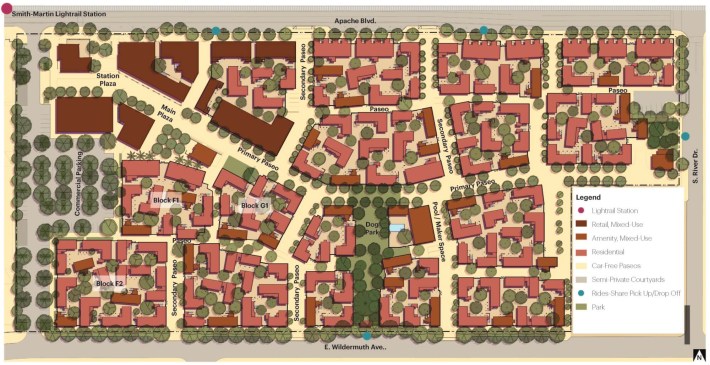
Daniel Parolek, who led the project’s architectural design, said that "not needing to accommodate spaces for car storage or circulation … opened up the opportunity to focus on creating people-oriented spaces."
“A main walkway extends throughout the property, and our son can spend hours out there riding his bike and we don’t have to worry," said resident Ignacio Delgadillo. "We actually know our neighbors. We’ve probably made more connections here in six months than when we lived in the suburbs for 15 years."
Yet, just a block away, Tempe’s low-density streets hum with vehicle traffic as usual. The two worlds coexist seamlessly.
If Culdesac Tempe can flourish in the heart of Arizona suburban sprawl on only 17-acres, Creedmoor’s 59 acres can do so much more in New York City. With more land for housing and commercial, this space could be a new hub for Queen’s growth and diversity. It will push against the rampant speculation that is driving home prices and groceries through the roof, while also creating an alternative for people that don’t want, can’t afford, or physically can no longer manage a single family house.
To adapt Culdesac Tempe’s formula, obviously, pedestrians would have to come first, with parking limited to the perimeter. And to boost transit, residents could sign away their car ownership for MetroCards and the MTA would have to provide bus service to the Elmont LIRR stop (only 1.5 miles away) and to the multiple subway lines at downtown Jamaica (only 4.5 miles away).
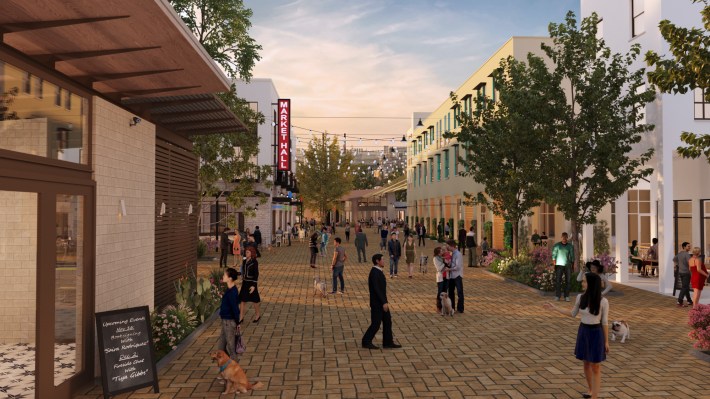
An expansion of Citi Bike and a completion of the long-delayed Motor Parkway East on the north side of the property would also encourage more cycling, connecting neighbors to all of the schools, parks and businesses along the Eastern Queens Greenway (including downtown Flushing and Bell Boulevard).
There could even be car-share on the edge of the development for those times when you do indeed really need a car.
All of this would result in a great neighborhood with even more people yet less negative impact on the land. Paris, a beautiful city with wide boulevards, averages 85 residents per acre. Taking that same density for the 59 acres available on the Creedmoor site would result in 5,015 residents. And if we remove the wide boulevards and side streets, we can house even more people.
At one point, at least, Queens Borough President Donovan Richards Jr. saw the possibilities: “The potential before us on the Creedmoor campus is limitless," he once said. "From thousands of units of housing to historic homeownership opportunities to school seats to community facilities to retail, this plan represents the single largest investment in Eastern Queens in generations."
Richards should embrace a Culdesac Tempe-style model because Creedmoor doesn't have to be another bland, cookie cutter development, but, instead, become America’s next great neighborhood.
Editor's note: After initial publication of this opinion piece, Empire State Development sent over the following statement, which we include in the interest of fair play:
"The revised plan for the Creedmoor campus reflects our productive collaboration with local elected officials and community members since the planning of this project began in 2023 with community visioning workshops. We appreciate their continued engagement and input in shaping a development that balances community priorities with housing needs, including homeownership opportunities, affordable housing, supportive housing, and housing targeted for seniors and veterans. We look forward to advancing through the approvals process later this year and continuing our partnership with the Queens community as we move this important housing project forward."
